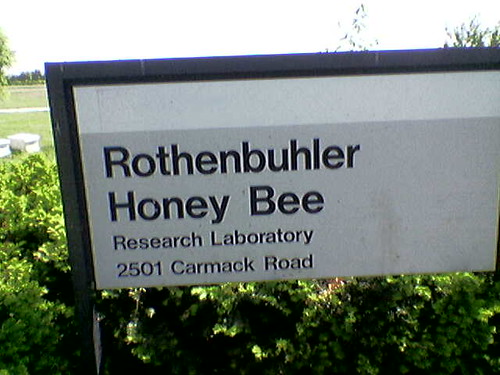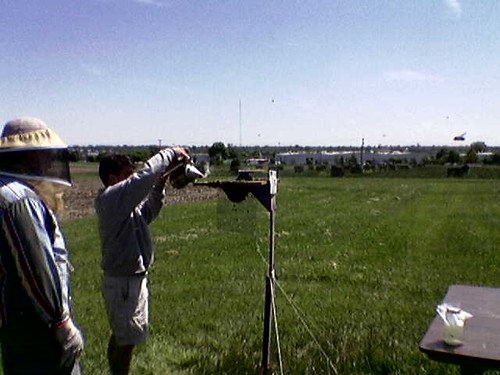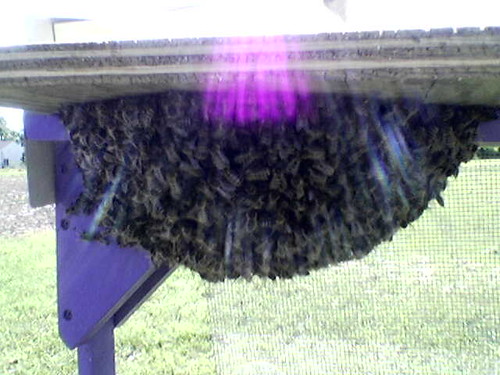Update: Something I forgot to mention... While hanging around the bees, I noticed that one of the farmers who takes care of the fields out there had a dog that liked to chase him around as he drove his equipment. It was pretty cute. Oh, dogs...
So this morning my adviser asked me to meet him out at the Rothenbuhler Honey Bee research lab. I had to figure out where that was. It was out on a dirt road by the cows with the glass stomachs...

I don't do any work with honey bees, but a few of his other students study their swarming formation as well as how they do nest site selection. The hope is to build a model of their dynamics that actually makes accurate predictions about how the bees work.
Anyway, I created a photo set for the pictures I took today. Here are some examples...

Above is my adviser (an electrical engineer, mind you) smoking off the top of the apparatus. He wants all of the bees to clump on the bottom of the apparatus. You see, there is a queen in there caged so she can't take off. The bees clump around her and do their nest site selection process. The piece of plywood protects the bees from rain.
Below is a picture of the eventual clump...

There are several thousand honey bees in there. I took this with my cell phone. This clump is no more than a couple of feet away from me. I'm not wearing any protective gear.
Apparently the bees are very docile during nest site selection. They don't become defensive until they have a nest to defend. Right now they're too preoccupied with finding a nest to care about my presence. In fact, you can stick your hand right into the middle of the bundle. My adviser did it a number of times... I didn't. :)
They're interested in their nest site selection process, not their foraging process, so they put a glass of sugar water on top to feed them. They end up feeding their caged queen by regurgitating through windows in her cage. Apparently this is how they do things anyway. (just without the cage)
Anyway, the bees do this "waggle run" dance that you can watch. Bees that find a nest site that they "like" land on the top of the pack and move in little figure eights. Whenever they do a turn, they wiggle their rear ends for a certain amount of time that corresponds to the distance the nest site is away from them. On top of that, the angle the figure eight makes with the sun (or gravity; they can pick whatever reference makes the most sense, and they don't even have to have a line-of-sight with the sun because of the wavelengths of light that they can see) corresponds the angle the nest site makes with their current location. This allows them to radially map the world around them. They can pick out nests (little tiny holes no more than a few centimeters wide) that are miles away.
Isn't that crazy?

No comments:
Post a Comment